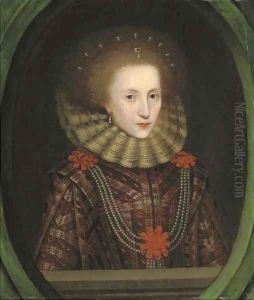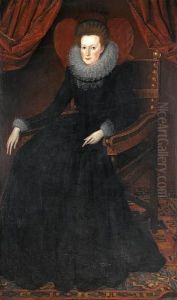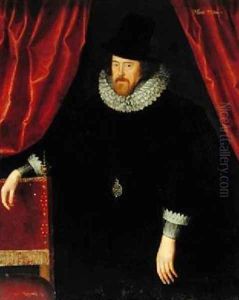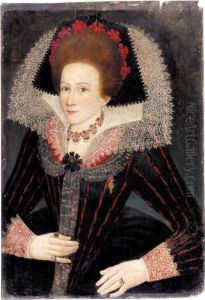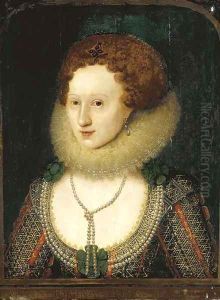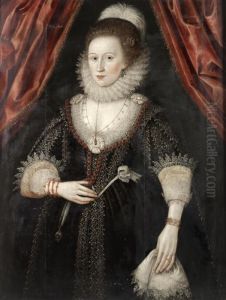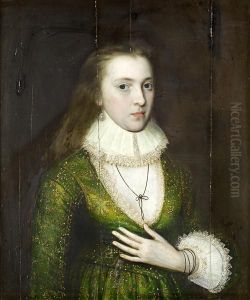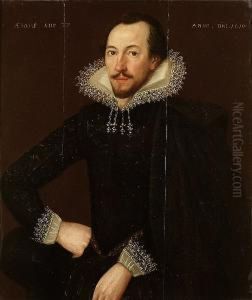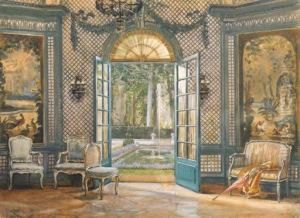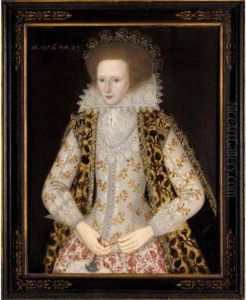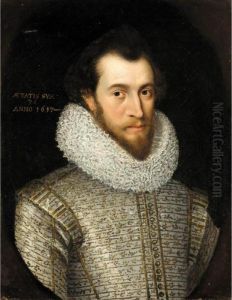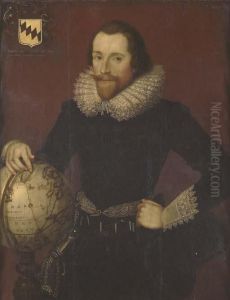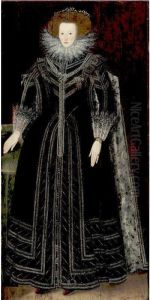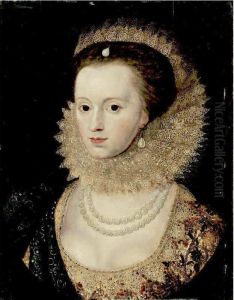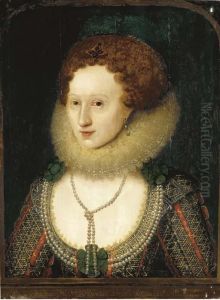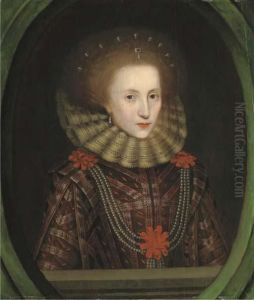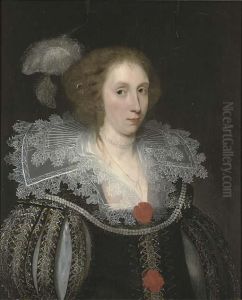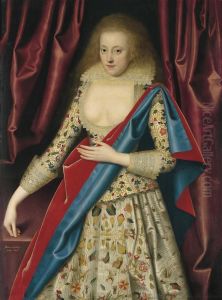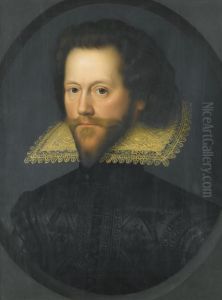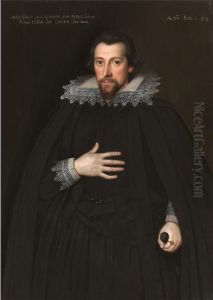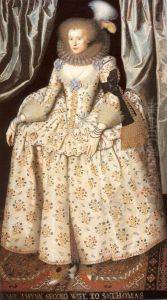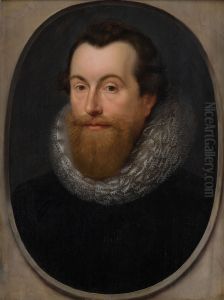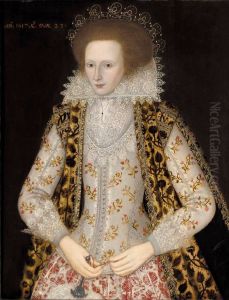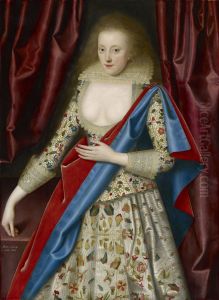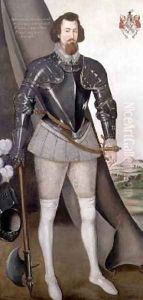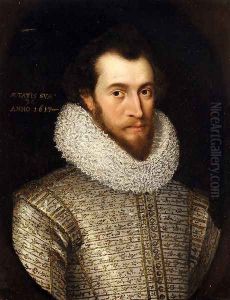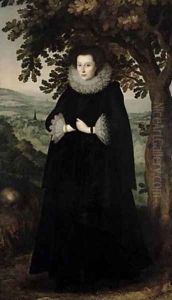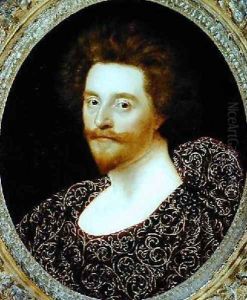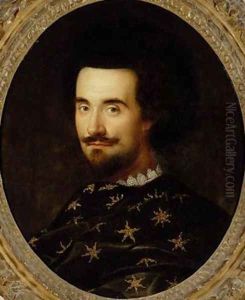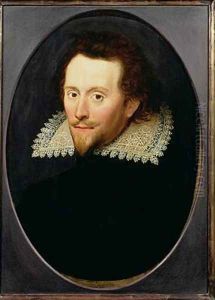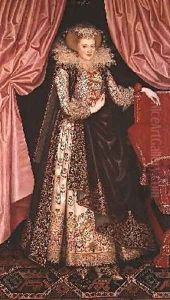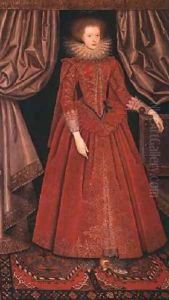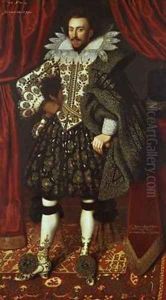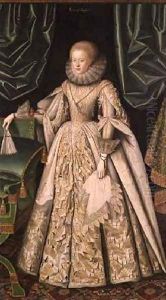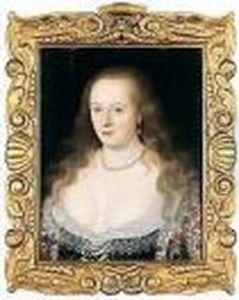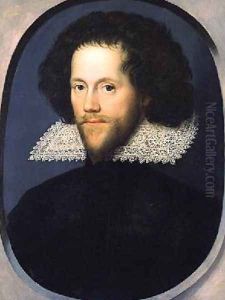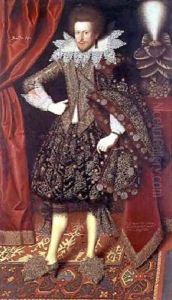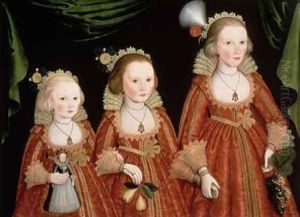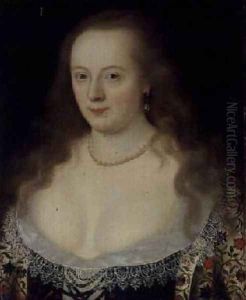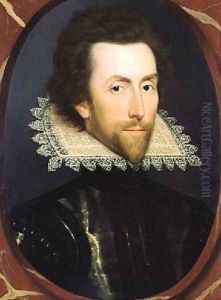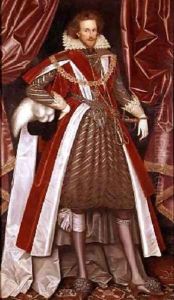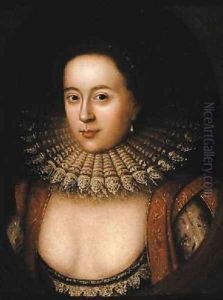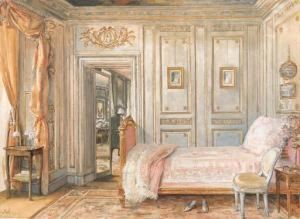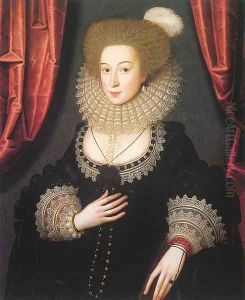William Larkin Paintings
William Larkin was an English portrait painter active during the late 16th and early 17th centuries, known for his highly detailed and elaborately dressed figures set against plain backgrounds. Larkin's exact date of birth is not known, but he is believed to have been born in the 1580s. His career flourished during the Jacobean era under the patronage of the English court and nobility.
Larkin is often noted for his distinctive style, which involved the use of intricate lace and fabric textures, rich colors, and ornate costumes. His subjects were typically depicted with a high degree of realism and attention to detail, particularly in their clothing and accessories, which reflects the fashions of the time. This has made his work particularly valuable to historians interested in the clothing and textile history of the period.
While not as well known as some of his contemporaries like Nicholas Hilliard or later, Anthony van Dyck, Larkin's work is recognized for its contribution to the development of English portraiture. He has been called 'The Curtain Master' due to his frequent use of draped curtains as a backdrop for his subjects, a feature that has become one of the hallmarks of his portraits.
Little is known about Larkin's training or early life. He is first recorded in 1609 when he was already an established portraitist. His clientele included members of the aristocracy such as the Earl of Dorset and the Herbert family. Unfortunately, Larkin's career was relatively short; he died in 1619, and his reputation was quickly overshadowed by the next generation of portrait painters. Nevertheless, his works remain an important part of the English art historical record, and they are held in collections such as the National Portrait Gallery in London and other public and private collections around the world. His portraits are often studied for their lavish portrayal of Jacobean fashion and their insight into the social and cultural life of the era.
